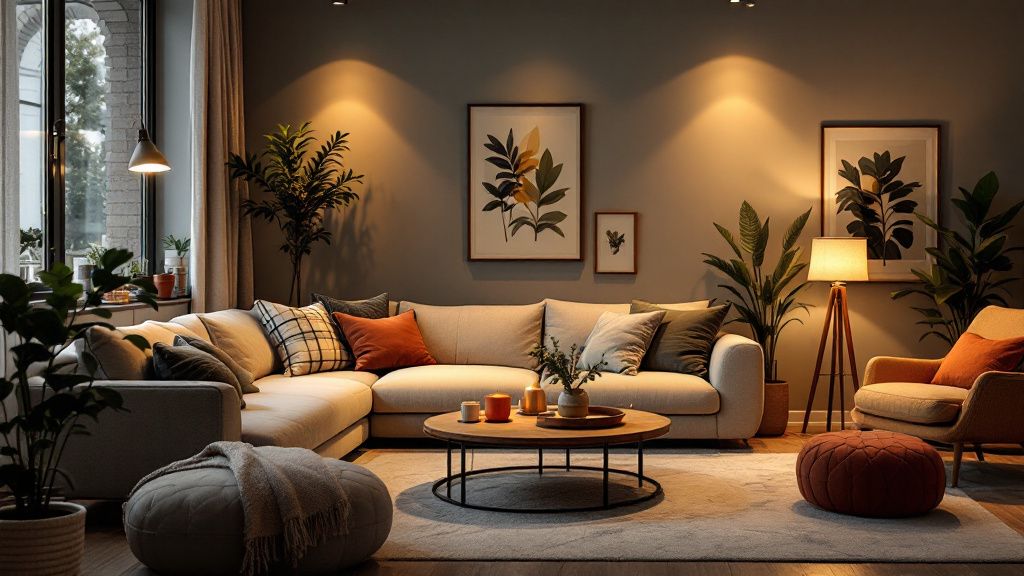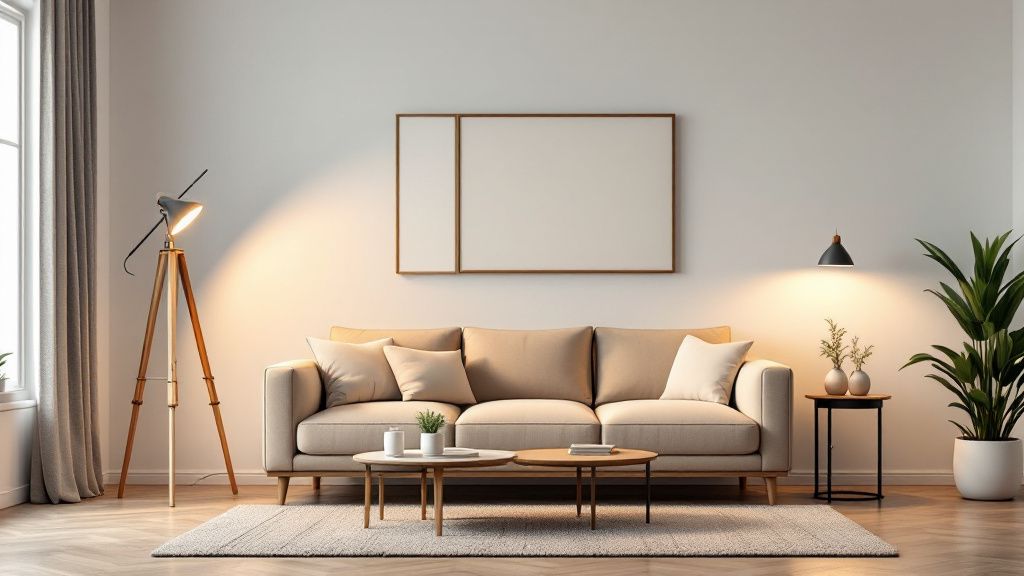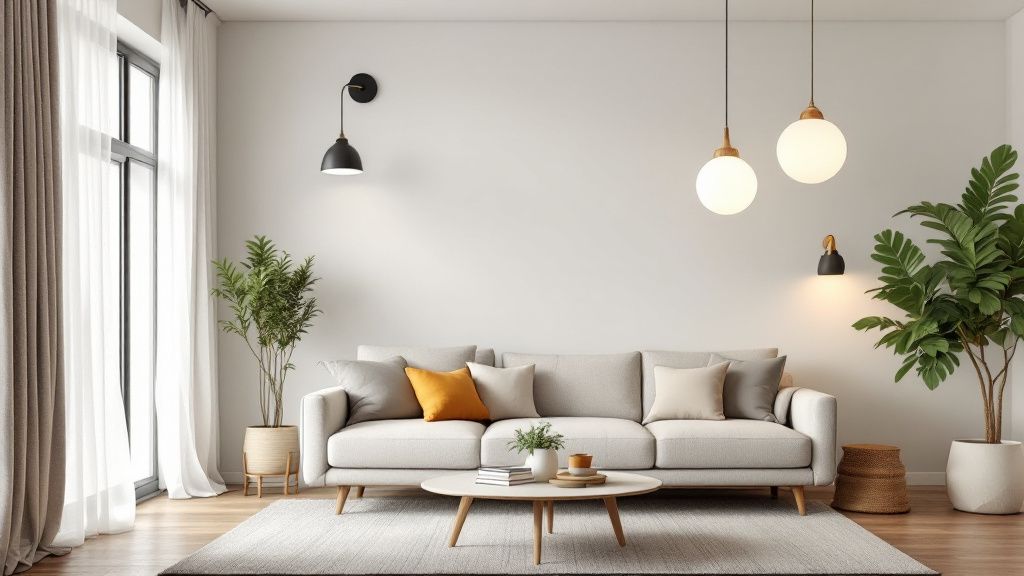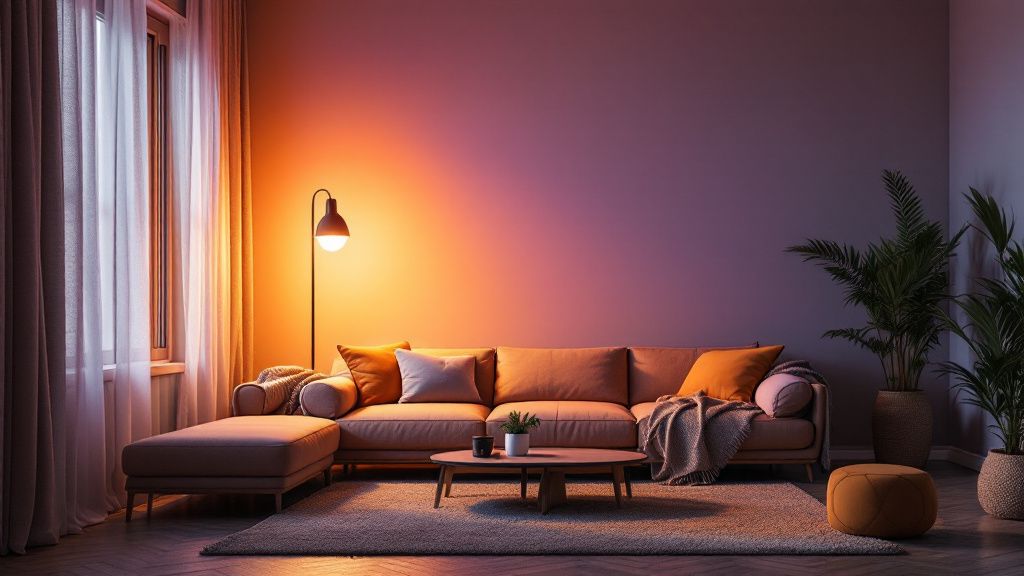What’s the Best Lighting for a Cozy and Functional Living Room?
- Travis Andersen

- May 26
- 6 min read
Key Takeaways
Creating the perfect balance of lighting in your living room can transform it into a cozy haven while maintaining functionality for everyday activities. Using a blend of different lighting sources, such as overhead fixtures, floor lamps, and table lamps, allows you to control the ambiance effortlessly. Opt for warm lighting to infuse your space with a sense of tranquility and relaxation. Consider dimmable lights, which provide the flexibility to adjust brightness according to your mood or activity. By incorporating layers of light sources, you craft a cozy living room that invites you to unwind, enhancing both comfort and utility.

Understanding the Importance of Lighting in Living Rooms
Lighting plays a crucial role in shaping the atmosphere of your living room, significantly impacting both aesthetics and functionality. It alters how colors and textures are perceived, adding layers of depth and warmth to your space. The strategic placement of lights can enhance the visual appeal and comfort of your living room, making it an inviting retreat for relaxation.
The right lighting conditions go beyond aesthetics. According to studies, lighting influences mood and productivity levels, as the human brain responds to light’s intensity and warmth. Exposure to warm lighting can stimulate the production of serotonin, promoting feelings of comfort and relaxation, which is ideal for creating that cozy living room ambiance.
In addition to mood enhancement, good lighting design also supports practical needs. You can choose a combination of task lighting for focused activities, such as reading or working, and ambient lighting for general illumination. This thoughtful layering approach balances coziness with functionality, allowing your living room to serve multiple purposes seamlessly.
You can tailor the lighting setup to reflect your style and preferences. From soft, diffused glows to brighter, focused beams, each type contributes to a harmonious environment. The harmonious blend enhances your living room's overall appeal while meeting the demands of daily living, offering a space that feels both comforting and practical.

Types of Lighting for Your Living Room
Your living room lighting options can create diverse atmospheres and functionality through a combination of ambient, task, and accent lighting. Ambient lighting serves as the primary source, providing general illumination with options like ceiling fixtures or chandeliers. This foundational layer ensures the room feels welcoming and evenly lit, establishing a base for additional lighting layers.
Task lighting is essential for specific activities, such as reading or working, and typically consists of floor lamps or desk lamps that focus light where it's needed most. This direct lighting supports both practicality and comfort, making your living room a versatile space for various tasks while still feeling cozy.
Accent lighting adds depth and character by emphasizing features such as artwork or architectural elements. Strategically placed spotlights or wall sconces bring attention to these details, enhancing the room's visual interest. This type of lighting contributes to the overall ambiance, achieving a balance between functional necessity and aesthetic beauty.
In the next few years, advancements in smart lighting technology are likely to revolutionize how you control and customize your living room illumination. Increased integration of smart devices will allow for personalized settings, enhancing your ability to create tailored lighting experiences that align with your evolving lifestyle.

Choosing the Right Light Fixtures
Selecting the right light fixtures is crucial for achieving a cozy and functional living room. Start by considering ceiling lights as they provide broad coverage and can set the stage for additional lighting layers. Pendant lights or chandeliers offer both style and adequate illumination, serving as a focal point that blends functionality with aesthetics, helping to create a comfortable atmosphere.
Wall lights or sconces are excellent choices for adding soft, ambient light without overwhelming the space. Position them strategically to illuminate dark corners or highlight architectural features. This subtle yet impactful lighting enhances the room's warm lighting, fostering an inviting and relaxed ambiance suitable for a cozy living room.
Freestanding floor lamps and table lamps offer flexibility and can be easily repositioned to meet changing needs. They not only provide task lighting for reading or crafting but also contribute to the overall aesthetic of your space. In this way, they enhance both style and functionality, complementing the existing decor while ensuring versatile illumination.
In the next few years, advancements in LED technology and eco-friendly materials are likely to transform your choices in light fixtures. As sustainability becomes a key consideration, these innovative designs will not only enhance lighting efficiency but also offer limitless possibilities for personalization and energy conservation in your living room environment.

Color Temperature and Its Impact
Color temperature significantly influences the mood and functionality of your living room. Measured in Kelvin (K), it ranges from warm to cool, with warm lighting (around 2700K–3000K) emitting a soothing glow ideal for relaxation. This type of lighting fosters a cozy living room atmosphere, promoting comfort and a sense of well-being that encourages unwinding.
Cooler temperatures, typically above 4000K, are more suitable for task-oriented areas like home offices or kitchens. These provide a brighter, more focused light that enhances concentration and alertness. However, in a living room, balancing the two can create an environment that accommodates both leisurely and functional activities without sacrificing ambiance.
Understanding the impact of color temperature allows you to tailor your lighting scheme to suit the dual nature of the living room. A dynamic mix of warm light for relaxation and cooler tones for activities ensures your space remains versatile and inviting. This kind of thoughtful balance is something often explored in PDX Home Revival’s living room remodels , where function and atmosphere go hand in hand.
Looking ahead, advances in lighting technology are expected to offer even finer control over color temperature. Innovations such as smart bulbs and tunable LEDs will empower you to adjust lighting dynamically as your needs and activities change, further enhancing the adaptability and appeal of your living space.

Layering Light for a Cozy Feel
Layering light in your living room involves combining various types of lighting to create depth and warmth. This approach ensures the room is both functional and inviting. Start with ambient lighting, which provides overall illumination and serves as the base layer. Ceiling fixtures or pendant lights fill the space with soft, warm lighting, fostering a cozy living room atmosphere.
Task lighting serves as another essential layer, focusing on areas where you handle specific activities. These lights, like floor lamps or reading lamps, are crucial when crafting or reading. They not only enhance functionality but also help in maintaining a comfortable environment without overwhelming the room with too much brightness.
Accent lighting highlights architectural features or artworks, adding a layer of sophistication and visual interest. For example, using wall sconces to spotlight a textured wall or a beloved painting can draw attention and add character to your living space. These thoughtful touches accentuate the cozy feel without sacrificing style.
Layering is not just about different sources but also about controlling intensity. Dimmers can transform the mood at different times of the day, providing flexibility. This ensures that the lighting adapts with your lifestyle, enhancing the room's warmth and comfort as needed for any occasion.
A successful lighting scheme includes elements that harmonize and balance each other, enhancing the living room’s cozy yet functional nature. Deliberate light layering, with attention to source and intensity, creates an environment that invites relaxation while supporting a range of activities. By embracing this approach, you can craft a living room that perfectly suits your needs.

Smart Lighting Solutions for Modern Living Rooms
Smart lighting solutions have revolutionized modern living rooms by offering unparalleled convenience and customization. You can now easily control brightness, color, and timing through apps or voice commands. Tracing its evolution from simple manual switches in the early 20th century to advanced AI-integrated systems today, smart lighting technology continues to transform how you experience lighting in your home. These systems adapt to your lifestyle, ensuring both functionality and a cozy living room atmosphere with minimal effort.
With smart lighting, you have the power to create scenes that suit different moods or times of day. For instance, you can program warm lighting for the evening to cultivate a relaxing ambiance, and brighter settings for daytime activities. With features like motion sensors and automatic dimming, smart lights also enhance energy efficiency. In this way, they not only contribute to a more sustainable living environment but elevate the overall appeal and utility of your living room as a functional yet inviting space.
Frequently Asked Questions
What types of lighting are best for a living room?
Combining ambient, task, and accent lighting creates a cozy and functional environment.
How can I make my living room lighting more energy-efficient?
Use LED bulbs and smart lighting solutions to optimize energy use and customize settings.
Why is warm lighting preferred in living rooms?
Warm lighting provides a soft, inviting glow that enhances relaxation and comfort.
Can I control my living room lights with my phone?
Yes, many smart lighting systems allow control through mobile apps or voice commands.
What role does color temperature play in living room lighting?
Color temperature affects mood and functionality, with warmer tones being more calming and cooler tones better for tasks.



Comments